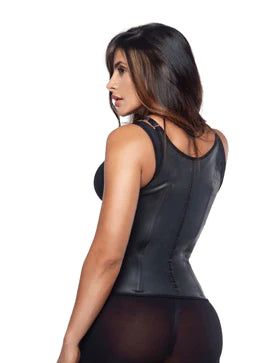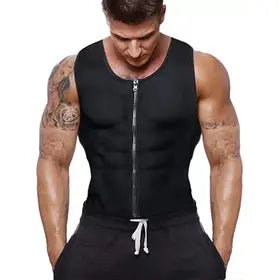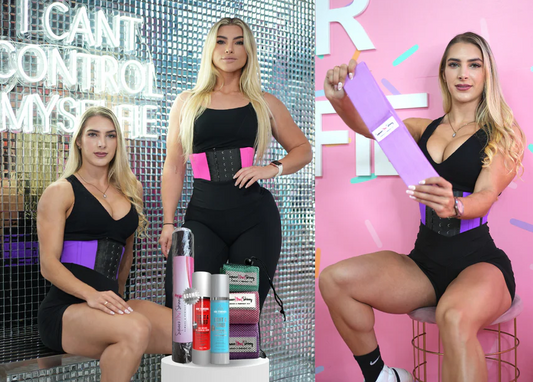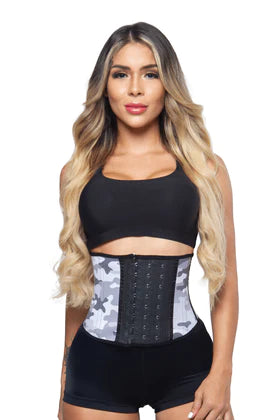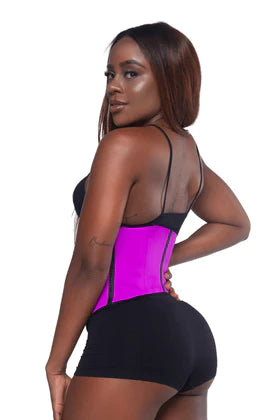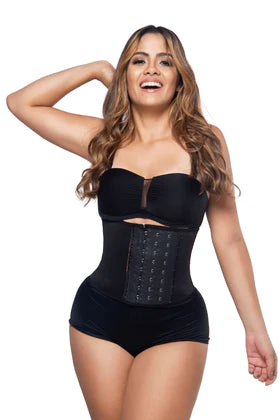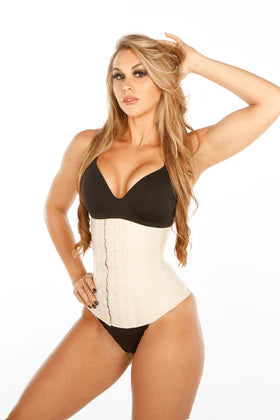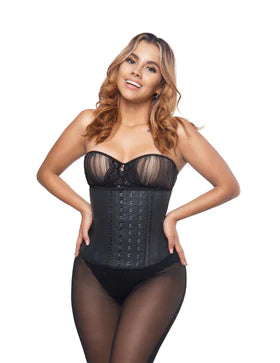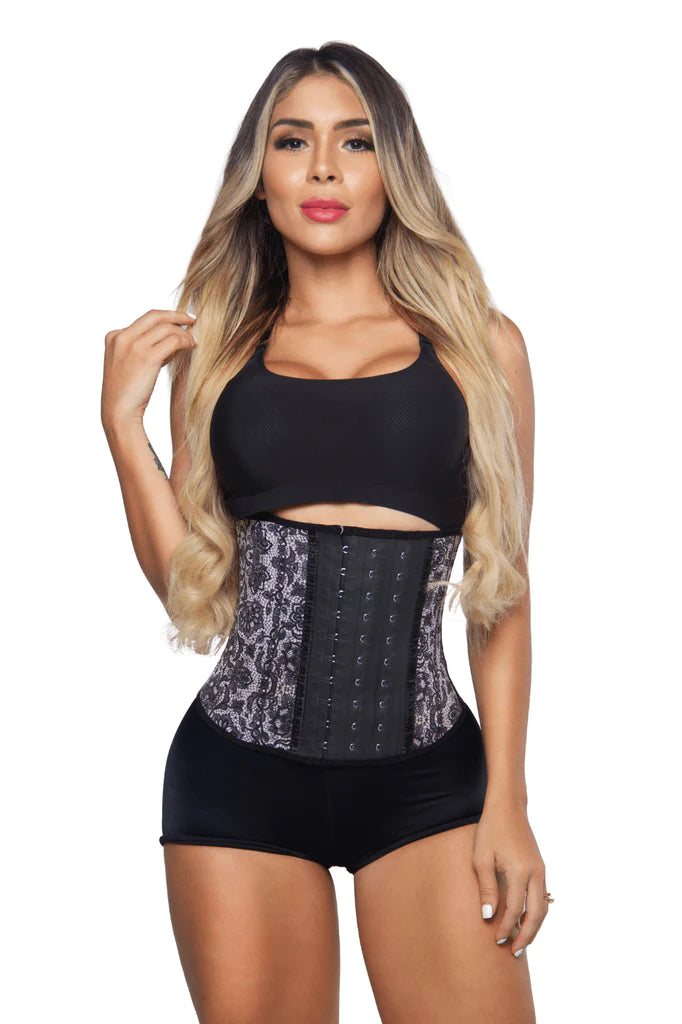
Staying Hydrated When Using a Waist Trainer
Your waist trainer will play an important role in your core abdomen muscles. When you are wearing your waist trainer throughout the day, your muscles are becoming more inline and are toning, playing a role in correcting your posture. Your muscles need water when they are at work. Learn about how staying hydrated will help you get the most out of your waist trainer and help you achieve your fitness goals.
What happens to the body when you are working out?
When you are working out, there are a wide variety of different processes that happen throughout the body. The body actually produces a tremendous amount of heat while working out. When someone is working out intensely, they may produce as much as, 1000W of heat. Some heat produced by the body gets stored, raising one's temperature by a few degrees. Your body temperature could be as high as 104 °F during the most intense moments of your workout.
Water is your body's primary way of optimizing its temperature. When you sweat, your body loses water. In addition to perspiration, radiation, convection, and conduction are always that your body dissipates heat.

Why do your muscles need water?
Your muscles need water for other purposes other than the dissipation of heat. Staying hydrated will help your muscles in a wide variety of different ways:
- Water energizes your muscles: Not only does water from the structure of proteins and glycogen that your muscles need to thrive, water transports electrolytes throughout your body.
- Water lubricates your joints: Water is a key component of your body's synovial fluid. This fluid lubricates your joints and makes movement easier.
- Water lets you better tolerate pain: If you drink enough water, you are less likely to experience muscle aches and cramps.
- Water helps you recover more quickly: Water transports toxins out of your body's systems, making it easier for you to recover after a hard workout.
How much water does the body need when working out?
Everyone should consume about 8 to 10 eight-ounce glasses of water per day. However, your body needs more water when working out and this is not a guideline that people tend to always follow. Generally speaking, you will lose different levels of water based upon the duration and intensity of your workout. A pint of sweat is about a pound of weight that your body loses. During an hour-long cardio workout, you could lose anywhere from ½ to 1 lb through perspiration. A person who works out intensely can sweat as much as 10 to 12 liters per day.
To stay safe and hydrated, it is recommended that you consume water throughout your workout. You should drink about 10 ounces of water for every twenty minutes of exercise. This will help your body recover lost fluid throughout your workout.
What happens if you don't stay hydrated when working out?
When you don't consume enough water during your fitness sessions, the most common thing you are going to notice is that you grow tired more quickly. Your body loses its ability to regulate heat, which gives you the sensation of tiredness and fatigue. Dehydration will also cause stomach pain, because your stomach doesn't pass food to the small intestine as quickly.
Dehydration also adversely impacts the muscles in your body. Not drinking enough water will lead to delayed onset muscle soreness, meaning your muscles will hurt towards the end of and after your workout. If your body doesn't have enough water, you may experience cramps brought on by buildup of lactic acid. Additionally, you will also feel tired and fatigued.
Joint pain is also a common indicator of dehydration. Synovial fluid is approximately 70% to 80% water. If you don't drink enough water, you will experience joint pain towards the end of your workout.
Should sport drinks be a replacement for water?
In addition to water, many people will drink sports beverages like Gatorade or Powerade. These beverages are great for providing the body with needed electrolytes, but should not be a replacement for water. A very limited number of people should consider sports drinks. If you anticipate your workouts lasting longer than an hour, sports drinks interspersed with water are appropriate. Here are some guidelines for interspersing sports drinks with water:
- Before an intense exercise session, sixteen ounces of water should be the choice beverage.
- Sports drinks can be consumed during a workout session.
- After working out, consuming a sports beverage can help rehydrate, however, water should also be consumed.
Sport drinks let you perform longer and more effectively during your workout session, providing needed energy to your muscles and controlling electrolytes in the brain. Sports drinks also help with recovery, replacing lost fluids and replenishing glycogen levels within your body.
Can certain foods also help with hydration?
Certain foods and dairy products will also help your body with hydration and electrolyte regulation. Any watery fruit or vegetable is a good source of vitamins, minerals, and other electrolytes. These include:
- Watermelon
- Strawberries
- Cantaloupes
- Peaches
- Oranges
- Skim Milk
- Cucumbers
- Lettuce
- Spinach
Leafy green and stalky vegetables all are a good source of water and will help you stay hydrated when you are working out.

How to tell if you are dehydrated
If you suspect that you are dehydrated, there are symptoms that you should keep an eye out for. You might notice that your urine is a darker color. You might notice slight muscle cramps that increase in intensity during your exercise period. As your dehydration progresses, you might notice fevers or chills, a craving for sugar or sweets, a dry mouth and skin, and a fast heartbeat. Minor dehydration can be treated by taking a break from your workout and catching up on water intake.
Quick tips for staying hydrated
Now that you understand the importance of being hydrated and the role water plays in the body, here are some quick tips for staying hydrated:
- Don't wait until you are feeling thirsty to drink water.
- Flavor your water with things such as juice or fruits.
- When you eat, make sure to consume plenty of water-rich fruits and vegetables.
- If it's hot outside, try to plan your workout to stay inside.
- Make sure to dress for the weather and your workout.
- Make sure that you know to watch for symptoms of dehydration.
Staying hydrated and getting the most out of your waist trainer
If you are looking for a great-looking waist, a waist trainer from SqueezMeSkinny, diet, and exercise will help you achieve the look and feel that you want. Staying hydrated will help you get the most out of your workouts, recover after you are done working out, and stay healthy throughout the year. Try a waist trainer from SqueezMeSkinny to get on the right track to looking how you want.

